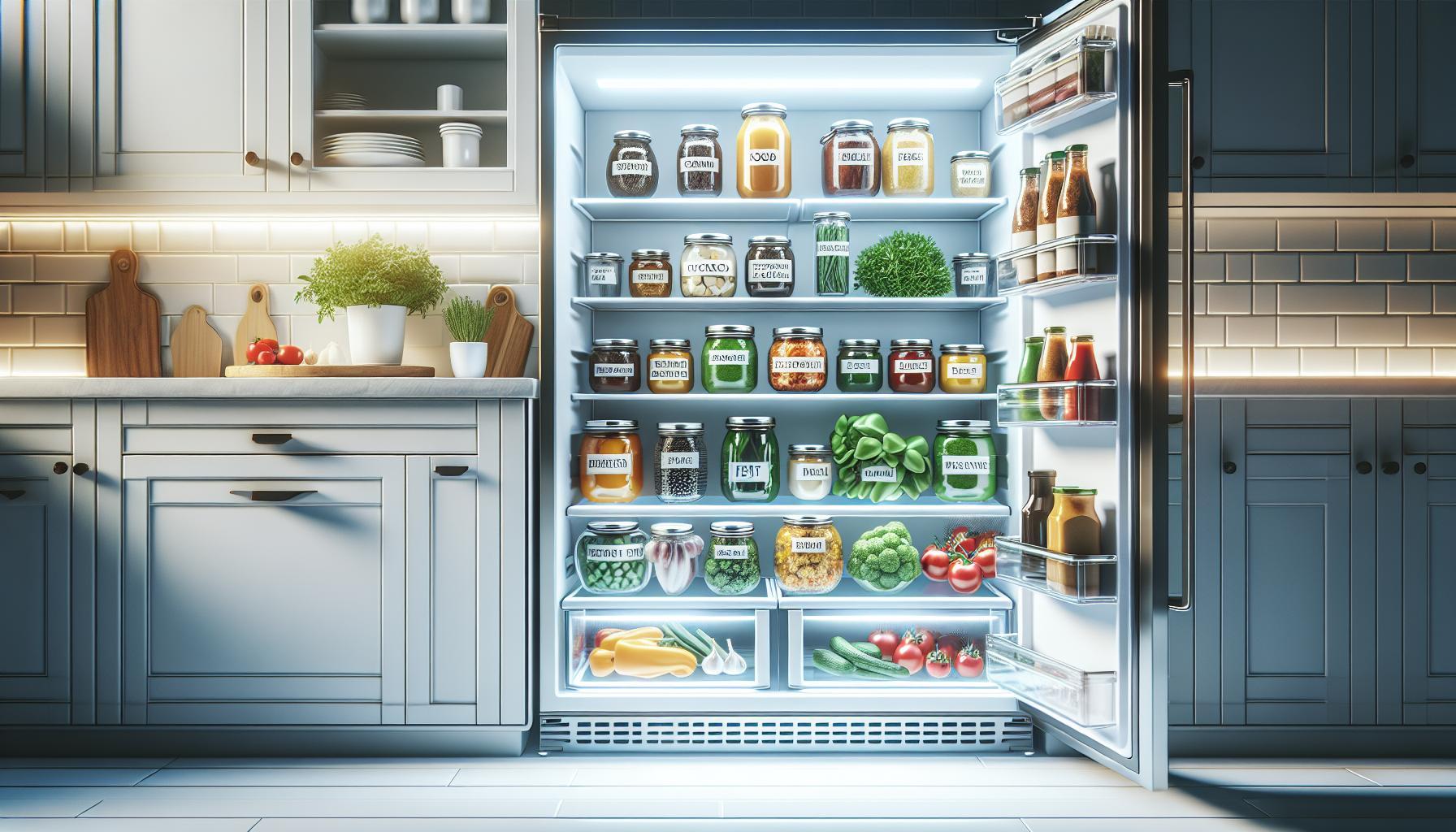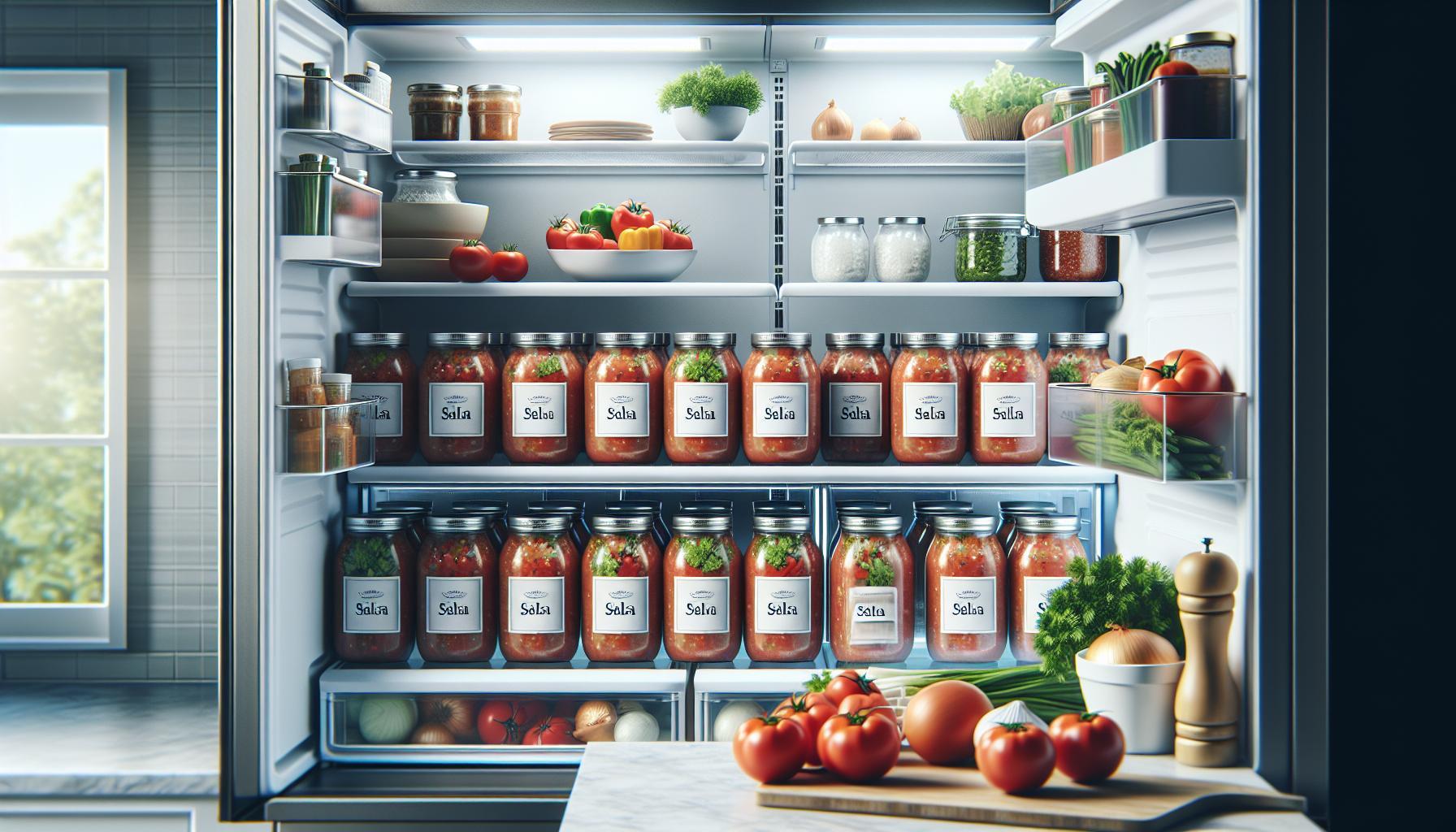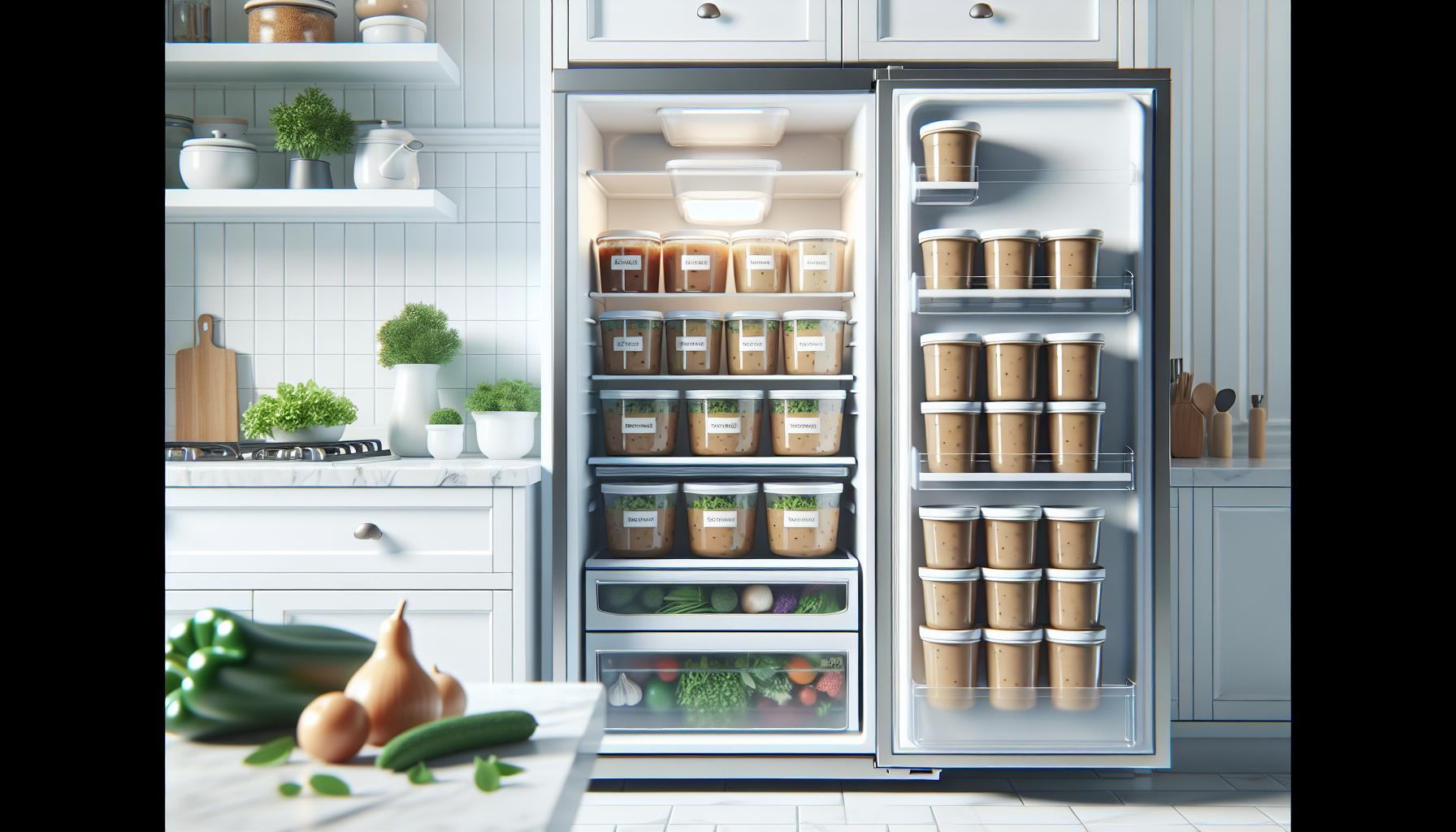Homemade spaghetti sauce is a delicious staple that enhances any meal, but many cooks are often left wondering how long it actually lasts in the fridge. Did you know that improperly stored sauce can lead to food waste and even health risks? Understanding the shelf life of your homemade sauce not only helps you enjoy its vibrant flavors longer but also ensures you’re consuming it safely.
Whether you’ve made a big batch for the week or are storing leftovers from a special dinner, knowing how to properly store your sauce is essential. This guide will provide you with specific timelines and tips on how to keep your homemade spaghetti sauce fresh and flavorful, while minimizing waste. Dive in to learn the best practices for storing your sauce so you can savor every bite with confidence!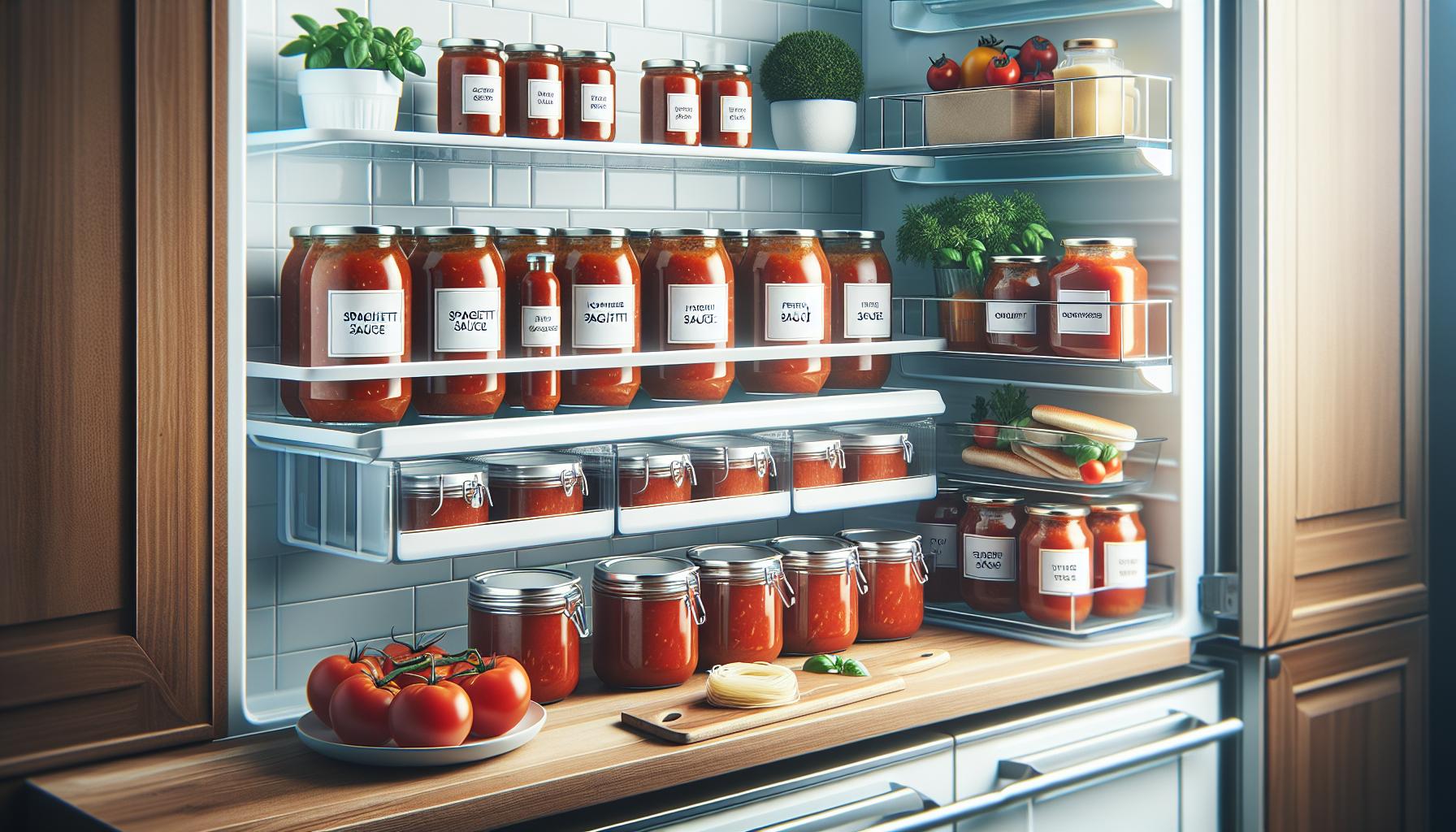
How Long Can You Store Homemade Spaghetti Sauce?
Homemade spaghetti sauce is a delicious and versatile addition to any meal, but knowing how long you can safely store it is crucial for both food safety and flavor retention. Typically, homemade spaghetti sauce can be stored in the refrigerator for about 3 to 5 days. This timeframe depends on the ingredients used and how well the sauce has been cooled and stored. To maximize freshness, it’s essential to transfer the sauce to an airtight container as soon as it has cooled to room temperature, preventing contamination and moisture loss.
For extended storage, freezing is a great option. When properly frozen, spaghetti sauce can last for up to six months while retaining most of its flavor and quality. Ensure the sauce is cooled before pouring it into freezer-safe containers or heavy-duty freezer bags, leaving some space for expansion. Label the containers with the date of freezing to help keep track of its storage time. When ready to use, thaw in the refrigerator overnight or use the defrost function on your microwave for quicker preparation.
By following these guidelines, you can enjoy your homemade spaghetti sauce at its best and minimize waste. Always remember to check the sauce for any signs of spoilage before use; if it looks, smells, or tastes off, it’s better to err on the side of caution and discard it.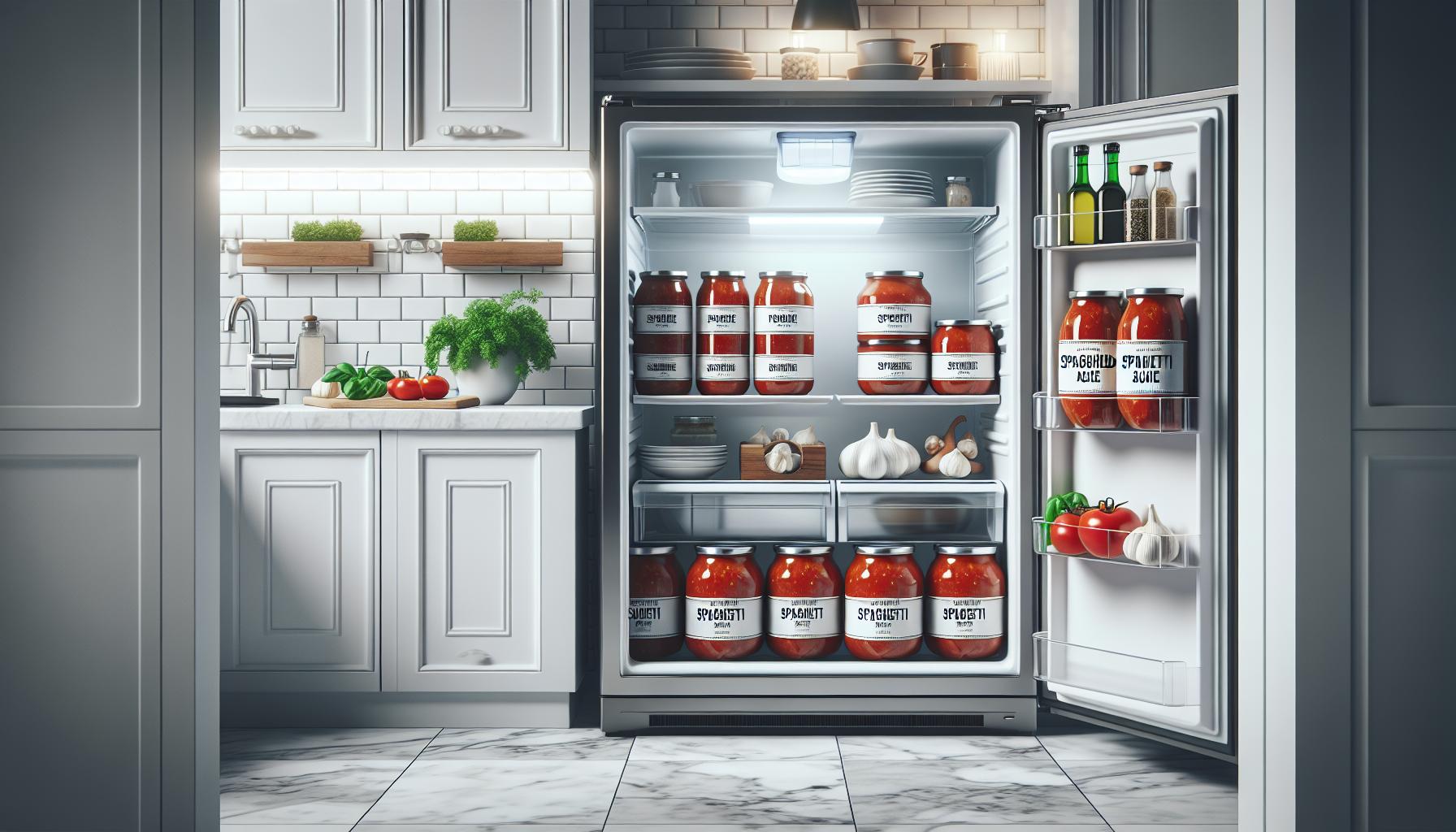
Signs Your Spaghetti Sauce Has Gone Bad
Homemade spaghetti sauce can transform any meal into a delightful experience, but it’s essential to be vigilant about its freshness to avoid a disappointing dinner or, worse, foodborne illness. Spoilage can occur due to various factors, including ingredient type, storage method, and time since preparation. To ensure your sauce is still safe to consume, keep an eye out for several key indicators of spoilage.
One of the most obvious signs that your spaghetti sauce has gone bad is an off smell. Fresh sauce should have a rich, inviting aroma. If you notice any sour, rancid, or otherwise unusual odors, it’s best to discard it. Additionally, look for changes in color; a deep red or vibrant sauce may turn dark or develop a dull, unappetizing hue over time. Texture changes can also be a telltale sign of spoilage. If your sauce becomes overly thick, appears clumpy, or develops separation – such as liquid pooling on the surface – it’s likely best to throw it out.
Another vital aspect to consider is the presence of mold. If you see any fuzzy spots or discoloration on the surface, this is a clear indicator that your spaghetti sauce has spoiled and should not be consumed. In some cases, even a small amount of mold could contaminate the entire batch, so erring on the side of caution is crucial. A final check should focus on taste; if the flavor is off or has significantly changed from when it was first made, avoid consuming it.
To help you identify potential issues, here’s a quick reference:
| Indicator | What to Look For |
|---|---|
| Smell | Strange or sour odors |
| Color | Darkening or dull appearance |
| Texture | Clumping or pooling of liquid |
| Mold | Fuzzy spots or discoloration |
| Taste | Off or unusual flavors |
By being proactive and knowledgeable about these signs, you can enjoy your homemade spaghetti sauce safely and deliciously. When in doubt, it’s always safer to throw it out!
Safe Storage Guidelines for Spaghetti Sauce
To enjoy your homemade spaghetti sauce safely and prolong its freshness, adhering to proper storage guidelines is crucial. When stored correctly, homemade sauce can last in the refrigerator for up to 4-5 days. If you want to extend its shelf life, consider freezing it, which can help preserve the flavor and quality for up to 3-6 months.
When storing spaghetti sauce, it’s essential to use airtight containers to prevent contamination and moisture loss. Glass jars or tightly sealed plastic containers are excellent choices. Be sure to allow the sauce to cool to room temperature before sealing it in a container. This helps prevent condensation, which can lead to spoilage. Label the container with the date it was made; this practice ensures that you can easily keep track of freshness.
For optimal refrigeration, place the sauce in the coldest part of your fridge, typically at the back, to maintain a consistent temperature. Avoid storing it in the door, where fluctuations in temperature are more common. If you’re planning to freeze a portion of your sauce, consider doing so in smaller batches. This way, you can thaw only what you need, avoiding waste and maintaining quality.
To ensure your homemade spaghetti sauce stays fresh, here are key storage tips:
- Store in airtight containers for maximum freshness.
- Label with dates for easy tracking.
- Refrigerate within two hours of cooking to prevent bacterial growth.
- Use refrigerated sauce within 4-5 days; freeze for longer storage.
- When freezing, leave some space in the container for expansion.
By following these guidelines, you can enjoy your delicious homemade spaghetti sauce without any worries, ensuring that each serving is as flavorful as the first day it was made.
How to Properly Freeze Spaghetti Sauce
To extend the life of your homemade spaghetti sauce and avoid waste, proper freezing techniques are essential. Freezing is an effective way to preserve not just the sauce’s shelf life but also its robust flavors and textures. By following a few straightforward steps, you can ensure your sauce remains delicious for future meals.
First, allow your spaghetti sauce to cool to room temperature after cooking. This is crucial as it minimizes condensation, which can lead to freezer burn and affect the sauce’s quality. Once cooled, transfer the sauce into airtight containers or heavy-duty freezer bags. If using containers, leave about an inch of space at the top to account for the expansion of the sauce as it freezes. For bags, squeeze out as much air as possible before sealing – this prevents ice crystals from forming and preserves taste.
It’s also advantageous to freeze your sauce in portion-sized amounts. This way, you can thaw only what you need without having to refreeze leftovers, which can affect texture and flavor. For ease of use later, consider labeling your containers or bags with the date and contents, helping you keep track of what’s in your freezer and when it was made. Homemade spaghetti sauce can typically last in the freezer for about 3-6 months, retaining its best quality within this timeframe.
Reheating and Using Frozen Sauce
When you’re ready to use your frozen spaghetti sauce, plan to thaw it in the refrigerator overnight for safe defrosting. If you’re short on time, you can also thaw it in the microwave or directly in a pan over low heat. Always ensure that the sauce is heated to at least 165°F (74°C) to ensure it’s safe for consumption.
By following these guidelines, you can enjoy your homemade spaghetti sauce with confidence, knowing it’s preserved effectively and will taste just as good as the day it was made.
Reheating Tips for Leftover Sauce
When it comes to enjoying your homemade spaghetti sauce, reheating it properly is essential to maintain its delicious flavors while ensuring safety. Whether your sauce has been stored in the refrigerator for 3 to 5 days or frozen for up to 6 months, understanding the best reheating methods can make all the difference in your meal.
Start by assessing how much sauce you have left. If it’s a small amount, the microwave can be an efficient choice. Pour the sauce into a microwave-safe container, cover it with a microwave-safe lid or a paper towel to prevent splattering, and heat it in short intervals of 30 seconds. Stir in between intervals to encourage even heating. Always check that the sauce reaches an internal temperature of at least 165°F (74°C) to eliminate any potential bacteria and to ensure it’s hot throughout.
For larger quantities, reheating on the stovetop may yield the best results. Place the sauce in a saucepan over medium-low heat. Stir occasionally to prevent sticking and ensure even heating. If the sauce appears too thick, you can add a splash of water or broth to achieve your desired consistency. This method allows the flavors to meld and develop even further, making it a favorite among many chefs.
Lastly, if you’re concerned about sauce sitting too long in the fridge before reheating, remember the general rule: if the sauce has been left out for more than two hours, it’s safer to discard it. By having these tips in mind, not only will you enjoy your spaghetti sauce safely, but you will also enhance your dining experience with flavors as vibrant as the day you made it.
Using Leftover Spaghetti Sauce in New Dishes
Utilizing leftover spaghetti sauce not only prevents waste but also allows you to create delicious meals with minimal effort. This versatile sauce can star in a variety of dishes, transforming your leftovers into new culinary creations. From heartwarming casseroles to zesty pizzas, there are countless ways to repurpose spaghetti sauce and bring fresh flavor back to your meals.
One of the simplest methods is to incorporate the sauce into a hearty soup. By adding the sauce to vegetable or chicken broth, you can create a satisfying minestrone. Just toss in some beans, pasta, and plenty of your favorite vegetables, simmering until everything is cooked through. You can also pour your leftover sauce over roasted vegetables or cooked grains like quinoa or rice for an easy and nutritious meal. The flavors will meld beautifully, creating a filling dish with little extra effort.
Another innovative idea is to use spaghetti sauce as a base for a savory casserole. Combine it with cooked pasta, cheese, and vegetables, placing the mixture into a baking dish for a comforting baked pasta dish. Top with mozzarella or Parmesan cheese, then bake until bubbly and golden brown. This not only showcases your flavorful sauce but also creates a comforting meal that’s perfect for leftovers.
Creative Dishes with Leftover Sauce
- Taco Night: Use the spaghetti sauce as a zesty taco filling, combining it with black beans, corn, and spices. Serve in taco shells or lettuce wraps with your favorite toppings.
- Stuffed Peppers: Mix the sauce with cooked rice, fill halved bell peppers with the mixture, and bake until the peppers are tender.
- Shakshuka: Transform the sauce into a delicious shakshuka by adding poached eggs, spices, and a sprinkle of feta cheese for a hearty breakfast or brunch.
Incorporating leftover spaghetti sauce into these varied recipes not only enhances the flavor of your meals but helps you make the most of your culinary creations. By thinking outside the traditional pasta bowl, you can enjoy your homemade sauce in new and exciting ways, minimizing waste while maximizing taste.
Avoiding Common Food Safety Mistakes
Ensuring the safety of your homemade spaghetti sauce is crucial not only for flavor but also for health. Many people unknowingly make food safety mistakes that can lead to spoilage or even foodborne illness. One common oversight is not allowing the sauce to cool completely before storing it in the refrigerator. It’s essential to let your sauce cool at room temperature for about two hours after cooking but not for too long. Rapidly cooling the sauce by placing it in shallow containers can significantly reduce the risk of bacteria growth.
When it comes to storage, remember that proper sealing is vital. Using airtight containers helps keep out air and moisture, which can contribute to spoilage. Labeling containers with the date you prepared the sauce ensures you stay mindful of how long it has been stored. Generally, homemade spaghetti sauce can be safely kept in the refrigerator for about 3 to 5 days. If you suspect you won’t consume it within that timeframe, freezing it is an excellent alternative. Just make sure to use freezer-safe containers, and leave space for expansion.
Check your sauce before reheating; it’s not just the length of storage that matters but also the conditions it’s been kept under. Look out for any signs of spoilage, such as off smells, changes in texture, or visible mold. If you’re ever in doubt, it is safest to discard the sauce rather than risk consuming something that may have gone bad. Staying vigilant and adhering to these guidelines will help you enjoy your homemade spaghetti sauce safely and deliciously.
Best Practices for Meal Planning with Sauce
Planning meals around your homemade spaghetti sauce not only helps in reducing waste but also enhances your culinary efficiency. One of the most effective ways to ensure that your sauce maintains its freshness and flavor is through smart meal prep. By utilizing your sauce in diverse dishes, you can make the most of it before it reaches its safe storage limit of approximately 3 to 5 days in the refrigerator. Consider batch cooking sauces and integrating them into various meals throughout the week.
To optimize your meal planning, follow these best practices:
- Portion Control: When making spaghetti sauce, separate it into portions immediately after cooking. This allows you to thaw and reheat just what you need for each meal, saving both time and ingredients.
- Incorporate Versatility: Think beyond spaghetti! Use your sauce in a variety of dishes such as lasagna, stuffed peppers, or as a base for a savory soup. Not only does this prevent boredom, but it also maximizes the use of your sauce.
- Labeling is Key: Always label your containers with both the type of sauce and the date it was made. This not only helps you keep track of freshness but also allows you to easily identify if you need to prioritize its use.
- Plan Ahead: Make a weekly menu incorporating the sauce into different meals. For instance, you might start the week with spaghetti, transition to baked ziti, and end with a pizza night using the sauce as a base.
By keeping your meal planning organized and flexible, you can minimize waste and enjoy the rich flavors of your spaghetti sauce in a multitude of ways. This approach ensures that every batch is utilized effectively while adhering to safe storage practices that prioritize your health. Making informed decisions about meal prep not only contributes to better management of your ingredients but also elevates your dining experience!
The Impact of Ingredients on Sauce Longevity
The shelf life of homemade spaghetti sauce can significantly vary based on its ingredients. Understanding how certain components affect the sauce’s longevity ensures that you keep your meals safe and flavorful. For instance, sauces rich in acidic ingredients like tomatoes, vinegar, or lemon juice tend to have a longer shelf life due to their ability to inhibit bacterial growth. Conversely, sauces with cream, cheese, or fresh vegetables are more prone to spoilage and typically need to be consumed within a shorter timeframe.
When preparing your sauce, consider the potential impact of each ingredient. If you’re using ground meats, for instance, note that they can spoil more quickly than plant-based ingredients. Ensure that any meat is fresh and cooked thoroughly to reduce the risk of foodborne illness. Adding herbs and spices not only enhances flavor but can also contribute to a sauce’s shelf life, especially when using dried varieties that have a longer shelf stability compared to fresh herbs.
Ingredient Considerations
Some key factors to keep in mind include:
- Acidity: Higher acidity in sauces, particularly those that include tomatoes and vinegar, can increase safety and longevity, allowing them to last longer in the refrigerator (typically 5 to 7 days).
- Dairy Products: Cream and cheese can lead to quicker spoilage, so sauces containing these ingredients should be consumed within 3 to 5 days.
- Frozen vs. Refrigerated: If extended storage is needed, consider freezing your sauce. Most sauces freeze well for 4 to 6 months, maintaining good quality when stored in airtight containers.
By selecting your ingredients thoughtfully and paying attention to how they interact, you can significantly extend the life of your homemade spaghetti sauce while ensuring each bite remains delicious and safe to eat. Always remember to label your containers with the date, keeping track of how long each ingredient contributes to the sauce’s overall freshness.
Storing Sauces in Airtight Containers
Storing homemade spaghetti sauce correctly is vital to extending its life and ensuring food safety. Using airtight containers not only protects the sauce from exposure to air but also helps prevent any absorption of odors from surrounding foods in the refrigerator. When sauces are stored improperly, they can spoil more quickly due to bacteria growth, oxidation, and moisture loss.
For optimal storage, choose containers specifically designed to create a tight seal. Glass jars with lids, plastic storage containers labeled as airtight, or vacuum-sealed bags are excellent options. When filling your container, leave a little space at the top before sealing; this allows for slight expansion if the sauce freezes. If using a vacuum sealer, ensure that the entire sauce is sealed, as any exposure to air can compromise freshness.
Once your sauce is securely stored, place it in the refrigerator, where it can generally last about 5 to 7 days. Always check for signs of spoilage, such as off odors, changes in color, or the presence of mold. If you won’t consume the sauce within that timeframe, consider freezing it. Properly stored in airtight containers in the freezer, spaghetti sauce can maintain its best quality for 4 to 6 months, after which it may still be safe to eat but may start losing flavor and texture.
To make the most of your sauce storage, label your containers with the preparation date. This will help ensure you use the oldest batches first, minimizing waste and ensuring flavorful and safe meals every time.
How to Identify Spoiled Ingredients in Sauce
Identifying spoiled ingredients in your homemade spaghetti sauce is essential for both food safety and flavor. Failing to do so can lead not only to unpleasant meals but also to health risks. When assessing your sauce, start by examining its visual aspects. Look out for any unusual color changes-for instance, if your vibrant tomato-red sauce has taken on a brown or dull hue, this can indicate spoilage. Additionally, any signs of mold, which can appear as white or green fuzzy spots on the surface, should be clear indicators to discard the sauce immediately.
Smell plays a critical role in determining sauce freshness. Your homemade spaghetti sauce should have a rich, savory aroma reminiscent of fresh tomatoes, herbs, and seasonings. If you detect any sour, rancid, or off-putting smells, it’s a strong signal that the sauce has gone bad. Texture changes can also hint at spoilage; if the sauce has become excessively watery or has an odd grainy consistency, it’s best to err on the side of caution and dispose of it.
Another consideration is the ingredients used. Fresh ingredients like garlic, onions, or vegetables typically have a shorter shelf life compared to canned or dried equivalents. If your sauce contains fresh herbs or vegetables and has been stored for several days, inspect these components more carefully. Any sprouting, wilting, or slime on fresh vegetables can lead to undesirable flavors and possible health risks.
To keep your homemade spaghetti sauce delicious and safe for consumption, label it with the preparation date and consume it within 5 to 7 days when refrigerated. Always follow your instincts; when in doubt, throw it out! Properly identifying spoiled ingredients not only helps prevent waste but ensures that every family meal is both enjoyable and safe.
Frequently asked questions
Q: How can I tell if my homemade spaghetti sauce has gone bad?
A: Signs that your homemade spaghetti sauce has gone bad include an off smell, discoloration, or visible mold. If it tastes sour or different from its original flavor, it’s best to discard it. For more detailed guidance, refer to the section on “Signs Your Spaghetti Sauce Has Gone Bad.”
Q: What is the best way to store homemade spaghetti sauce for maximum freshness?
A: To store homemade spaghetti sauce effectively, let it cool completely, then transfer it to an airtight container. Refrigerate it promptly to prevent bacterial growth. Check out “Safe Storage Guidelines for Spaghetti Sauce” for more tips.
Q: Can I freeze homemade spaghetti sauce, and how long does it last in the freezer?
A: Yes, you can freeze homemade spaghetti sauce! It lasts for up to 3 months in the freezer. For best results, portion and store it in freezer-safe containers or bags. Visit the section on “How to Properly Freeze Spaghetti Sauce” for step-by-step instructions.
Q: How long is homemade spaghetti sauce safe to keep in the fridge?
A: Homemade spaghetti sauce is generally safe to keep in the fridge for 3 to 5 days. Always store it in an airtight container to maintain freshness and prevent contamination. Review the “How Long Can You Store Homemade Spaghetti Sauce?” section for details.
Q: Is it safe to reheat spaghetti sauce multiple times?
A: It is safe to reheat spaghetti sauce multiple times as long as it has been properly stored and reheated to at least 165°F (74°C) before serving. For reheating tips, see the section “Reheating Tips for Leftover Sauce.”
Q: Can I use leftover spaghetti sauce in other recipes?
A: Absolutely! Leftover spaghetti sauce can be used in various dishes, like casseroles or as a pizza base. Check out “Using Leftover Spaghetti Sauce in New Dishes” for creative ideas.
Q: What factors affect how long homemade spaghetti sauce lasts?
A: The longevity of homemade spaghetti sauce can be influenced by ingredients, cooking methods, and storage conditions. Acidic ingredients like tomatoes can extend shelf life. For more insights, read “The Impact of Ingredients on Sauce Longevity.”
Q: Do I need to let spaghetti sauce cool before refrigerating it?
A: Yes, allow spaghetti sauce to cool to room temperature before refrigerating. Placing hot sauce directly in the fridge can raise the internal temperature and potentially spoil other foods. For better practices, refer to “Safe Storage Guidelines for Spaghetti Sauce.”
To Conclude
Now that you know how long homemade spaghetti sauce lasts in the fridge, you can confidently enjoy your delicious creations without waste. Remember, sauces typically last about 5 to 7 days when stored properly in an airtight container. If you’re looking to maximize freshness, consider freezing leftover sauce for later use-this can keep it safe for several months!
Don’t hesitate to explore more of our articles like “5 Quick Tips for Proper Food Storage” and “How to Tell if Your Sauce Has Gone Bad.” For more insights, subscribe to our newsletter for the latest tips on food safety and waste reduction. Your journey towards smarter cooking doesn’t end here-discover more ways to enhance your culinary skills and make every meal memorable! Share your favorite spaghetti sauce recipes in the comments below and connect with fellow cooking enthusiasts. Happy cooking!


